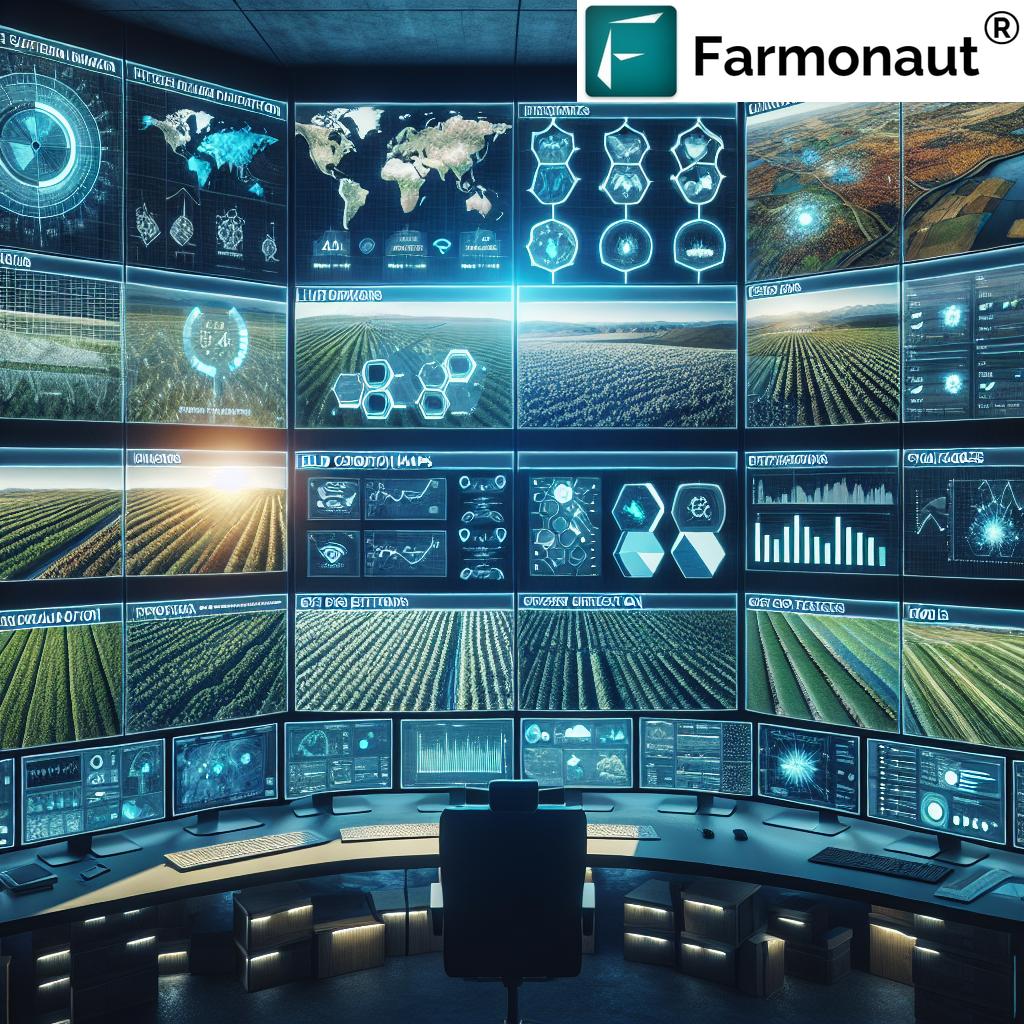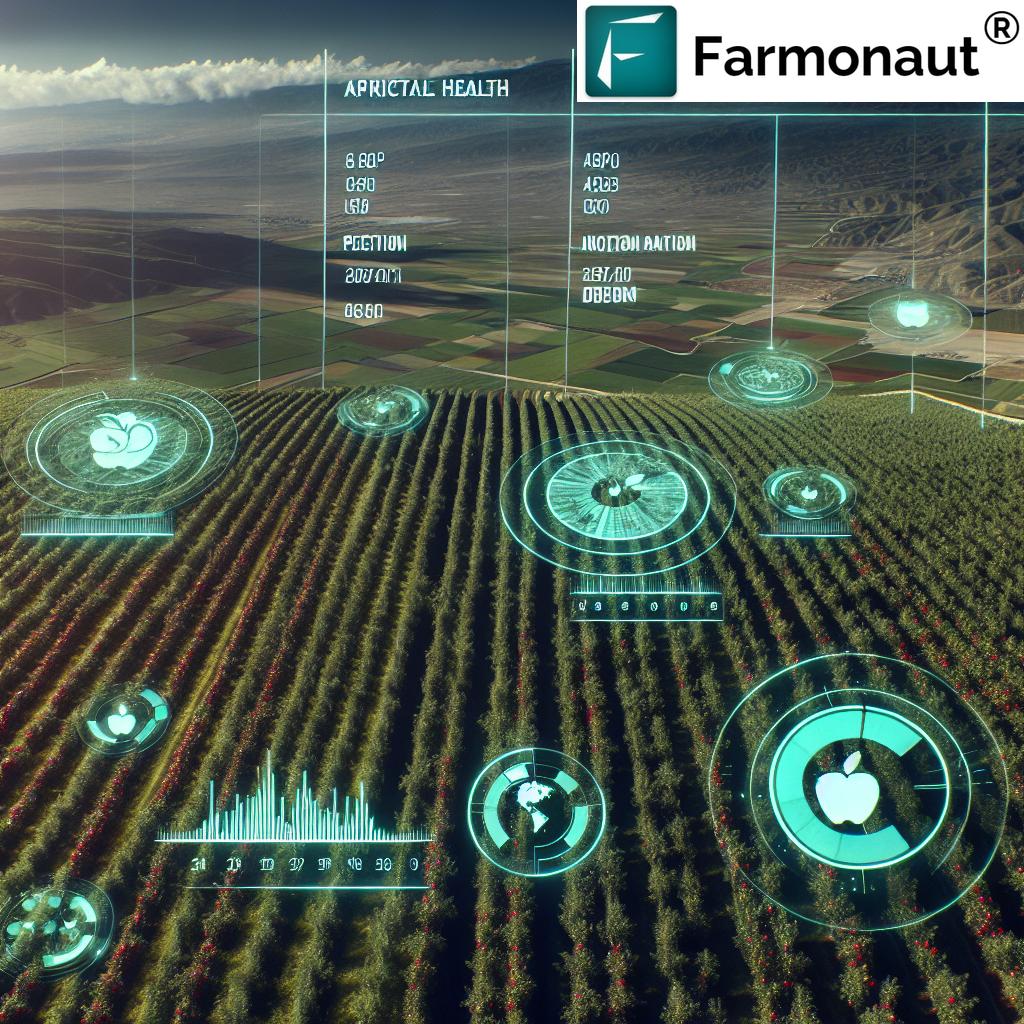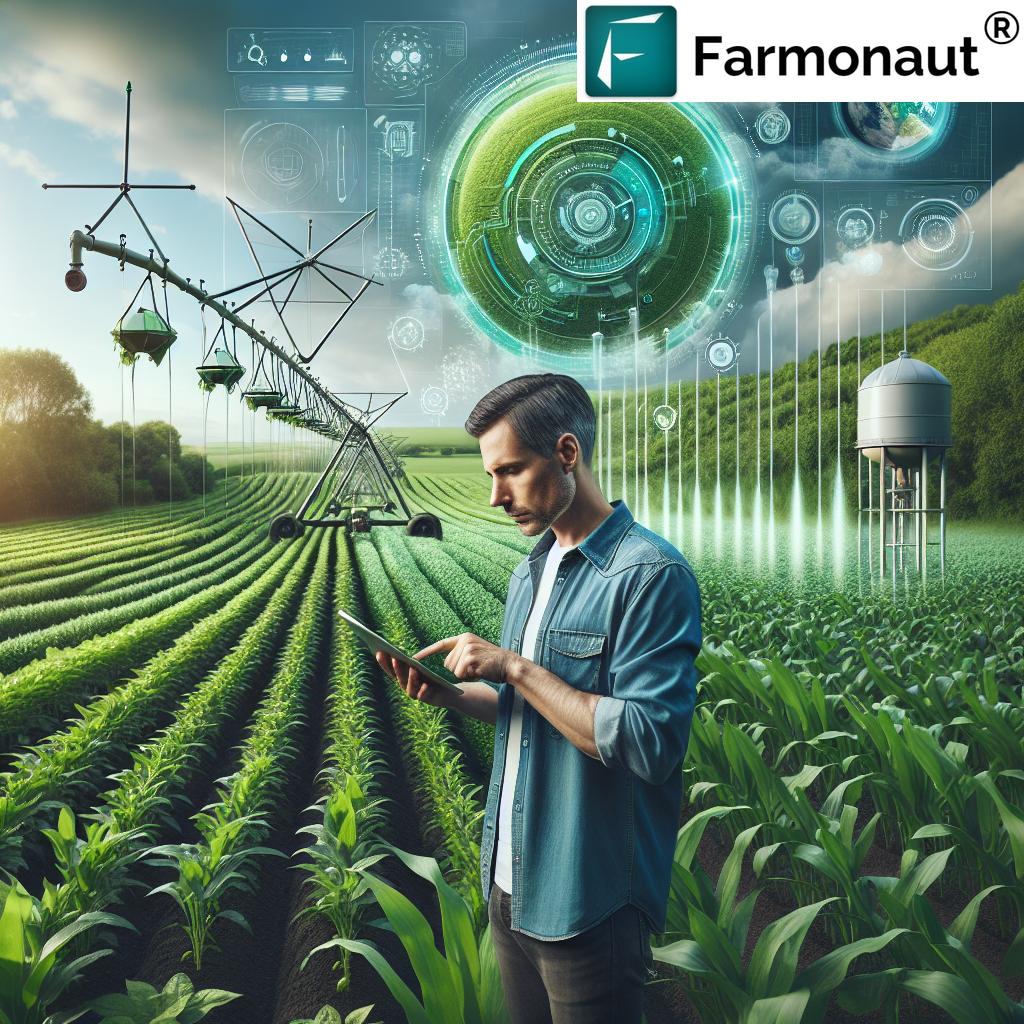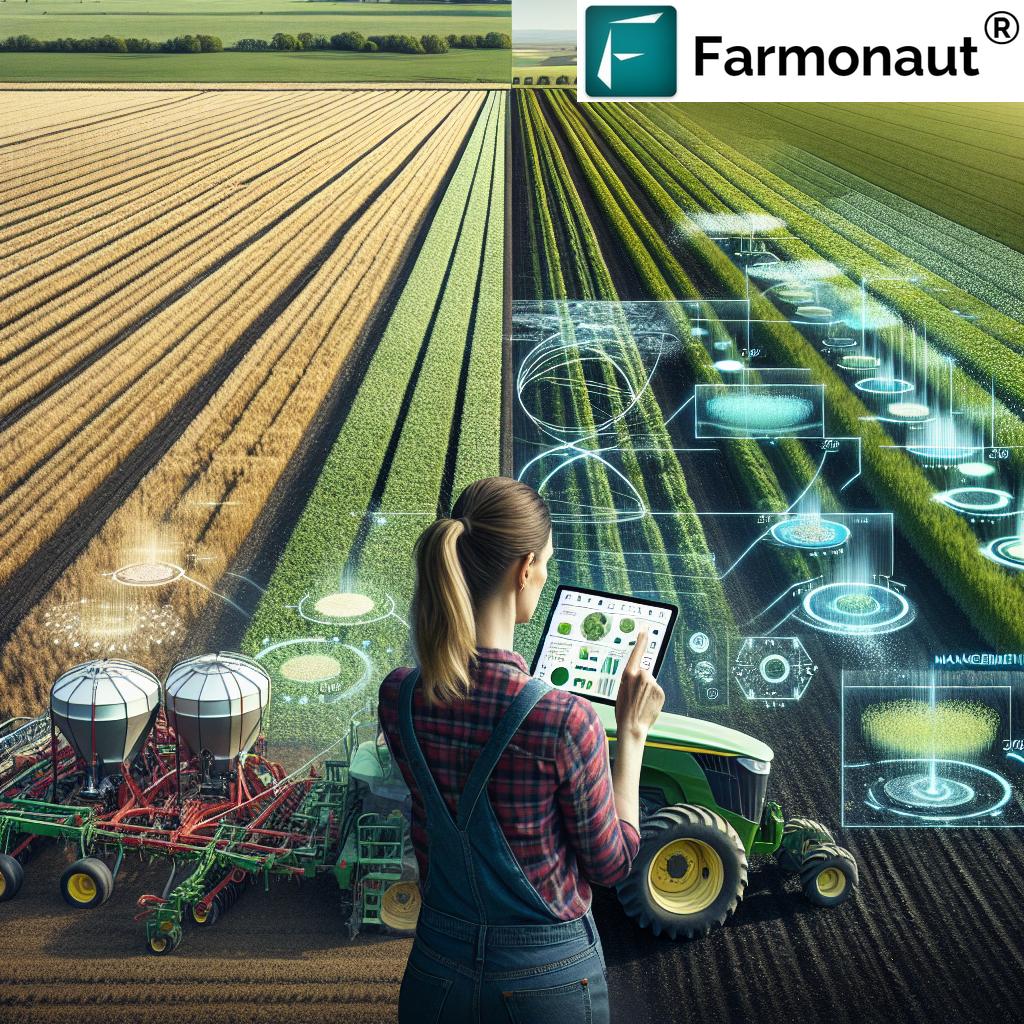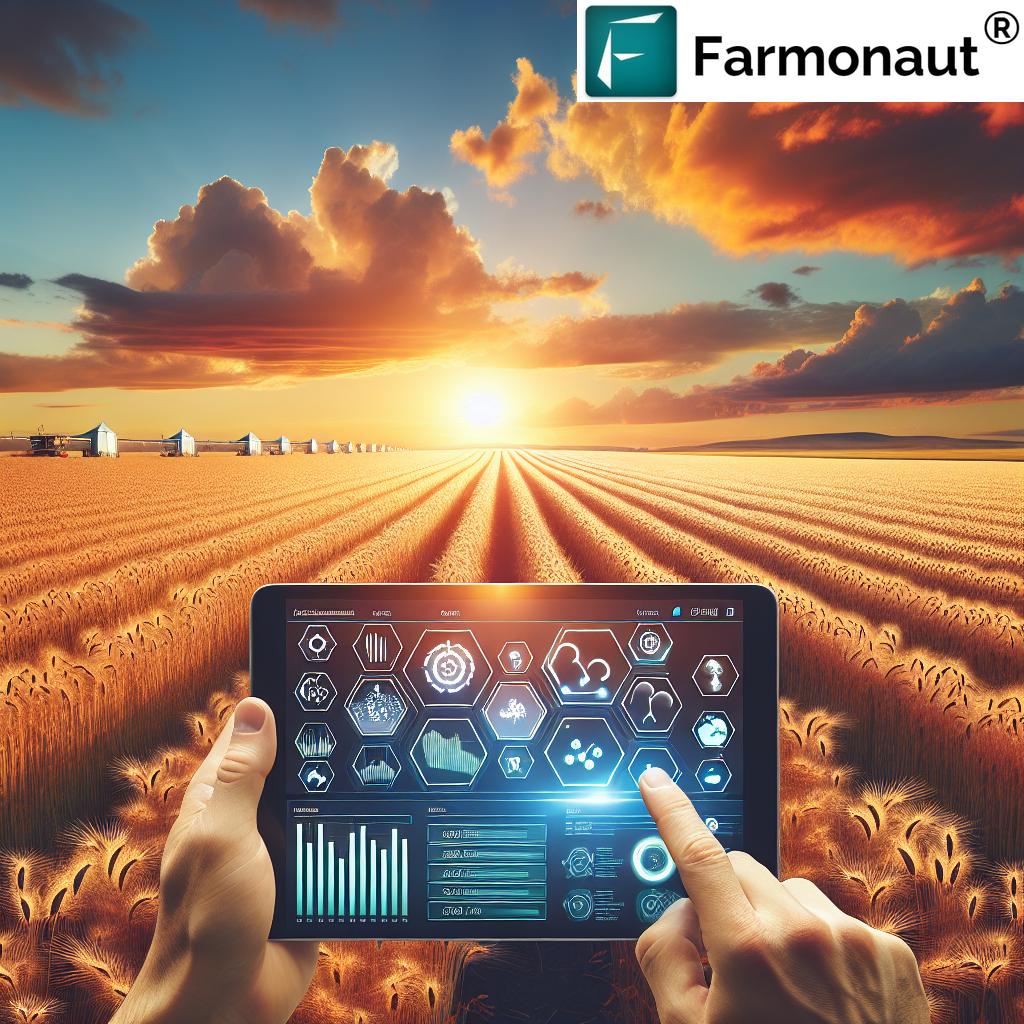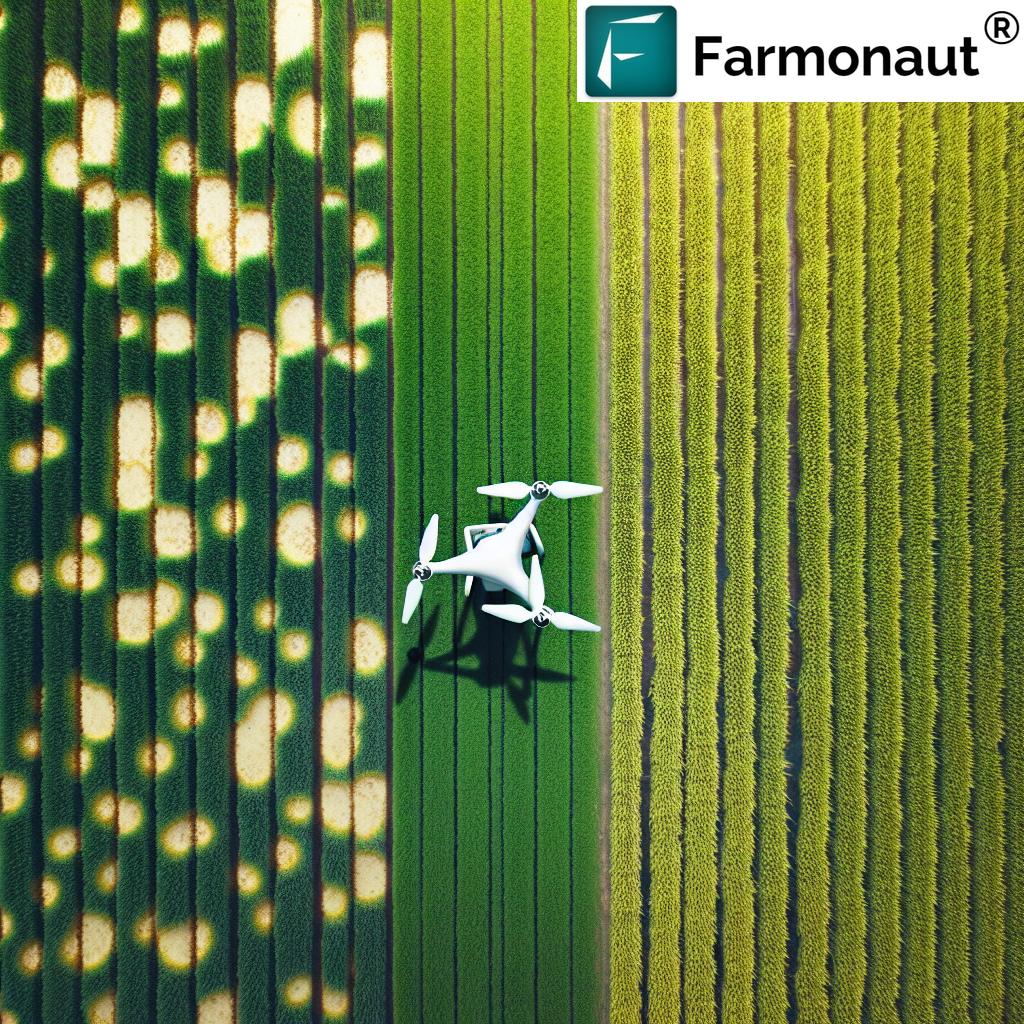Table of Contents
- Introduction: The Data Revolution in Agriculture
- Understanding Data Analytics in Agriculture
- 1. Precision Agriculture: Data-Driven Field Management
- 2. Yield Prediction and Forecasting: Plan for Prosperity
- 3. Pest and Disease Management: Analytics for Healthy Crops
- 4. Soil Health and Nutrient Management: Rooted in Analytics
- 5. Weather Forecasting & Climate Adaptation: Staying Ahead of Nature
- 6. Agricultural Supply Chain Optimization
- 7. Livestock Management & Monitoring: Data-Driven Animal Agriculture
- 7 Data-Driven Yield Hacks: Impact & Estimated Benefits [Table]
- Technologies Powering Data Analytics in Agriculture
- Farmonaut: Satellite-Powered Innovation for Every Farmer
- Challenges & Considerations in Data Analytics for Agriculture
- Resourceful Tools & Platforms: What to Use
- Frequently Asked Questions (FAQ)
- Conclusion: Embrace Data, Harvest Success
Data Analytics in Agriculture: 7 Yield Hacks Revealed
In recent years, data analytics in agriculture has ushered in a transformative era for farmers worldwide. Gone are the days when decisions hinged solely on intuition and tradition. Today, we have the tools and technologies to analyze troves of agricultural data—yielding insights that lead to greater productivity, improved sustainability, and enhanced profitability.
Together, let’s explore seven yield hacks—unveiling how data analytics can help us boost precision farming, optimize resource management, perfect crop yield prediction, monitor soil health, anticipate weather, streamline the supply chain, and maximize livestock productivity. Throughout, we’ll anchor our discussion to the principles championed by Farmonaut, whose satellite-powered solutions are redefining modern agriculture for all.
Understanding Data Analytics in Agriculture
What is data analytics in agriculture? It’s the art and science of collecting, analyzing, and leveraging vast quantities of data—from sensors, satellites, IoT devices, drones, and weather stations—to make informed decisions for our crops, soil, livestock, and business operations. These powerful insights enable us to:
- Optimize resource allocation (water, fertilizer, labor)
- Monitor crop health in real-time
- Predict yields and forecast market demand
- Proactively manage pests and diseases
- Ensure traceability and transparency in the agricultural supply chain
The result? We gain the ability to increase yields, reduce waste, manage risk, and foster sustainable farming for future generations.
1. Precision Agriculture: Data-Driven Field Management
Harnessing Data to Manage Variability
Precision agriculture is at the core of the modern farming revolution. Through the strategic use of data analytics in agriculture, we can address the natural variability found in our fields—ensuring optimal resource use and maximizing productivity.
- GPS: Guides equipment and field operations with exactness down to the meter.
- Remote Sensing & Satellite Imagery: Enables us to monitor crop growth, soil conditions, and even pest outbreaks in real time.
- IoT Devices & Sensors: Continuously gather data on weather conditions, soil moisture, temperature, and more—empowering us to make precise planting, irrigation, fertilization, and harvesting decisions.
This integration of data and technology lets us implement site-specific management practices, increasing efficiency and minimizing waste. No more “one-size-fits-all”—each field receives exactly what it needs, when it needs it.
Farmonaut, for example, leverages satellite-based crop management and monitoring solutions, helping us visualize and understand intra-field differences for better, faster decision making.
2. Yield Prediction and Forecasting: Plan for Prosperity
From Guesswork to Accurate Outcomes
Accurate crop yield prediction is essential for everything: planning resource allocation, scheduling harvests, and devising an effective market strategy. With modern analytics, we can analyze historical data alongside current variables such as weather patterns, soil health, and input usage.
Through integrated farm management software platforms such as those provided by Farmonaut, our yield predictions grow more reliable every season. This foresight helps us:
- Plan labor and logistics for harvesting
- Negotiate fair prices and contract agreements with buyers
- Reduce post-harvest losses by aligning with actual demand
The result? Reduced resource wastage, improved profitability, and a more efficient farm-to-market journey for our produce.
Ready for real-time crop advisory updates and AI-powered yield forecasting? Farmonaut’s Jeevn AI Advisory System brings personalized, data-backed advice straight to our devices.
3. Pest and Disease Management: Analytics for Healthy Crops
Proactive Detection Means Fewer Losses
In agriculture, pests and diseases are constant threats. But data analytics in agriculture enables a proactive approach instead of a reactive one. By analyzing patterns from field sensors, drones, and satellite imagery, we can detect abnormal trends early—triggering timely, targeted interventions.
- Pinpoint pest infestations before they spread
- Minimize chemical usage and associated costs
- Reduce crop losses and enhance food safety
Meticulously monitoring signs of diseases through remote sensing helps us minimize risks and improve overall yield. Farmonaut makes this simpler, guiding interventions with near real-time crop health analytics.
4. Soil Health and Nutrient Management: Rooted in Analytics
Because Healthy Roots Yield Healthy Crops
Soil health monitoring is crucial for maintaining productivity and sustainability. By collecting and analyzing data on soil moisture, nutrient levels, organic content, and pH, we can:
- Spot nutrient deficiencies and imbalances
- Implement precise fertilization strategies—reducing costs and environmental harm
- Reduce soil erosion and promote long-term productivity
Farmonaut’s carbon footprinting and soil analytics tools make it easy for us to track field history, intervene where needed, and measure our sustainability gains.
5. Weather Forecasting & Climate Adaptation: Staying Ahead of Nature
Turn Volatility into Opportunity
Weather forecasting for farmers used to be ambiguous. Now, with big data analytics and satellite-derived information, we access precise, localized forecasts on rainfall, temperature, and extreme events.
- Time planting and harvesting for best results
- Protect crops from adverse conditions
- Lessen climate-related risks and losses
Farmonaut’s satellite weather API and weather console in the app, empowers us with actionable weather intelligence for every farm, everywhere.
Access Farmonaut’s API developer docs here.
6. Agricultural Supply Chain Optimization
Linking Farm to Fork with Data
Improving the agricultural supply chain means ensuring our crops move efficiently from field to market. Data analytics helps us analyze every phase:
- Production Tracking: Monitor yields in real-time and align with market demand
- Transportation Optimization: Reduce fuel costs and delivery delays with fleet management analytics
- Blockchain-based Traceability: Assure food safety, prevent fraud, and build trust with transparent supply chains
Farmonaut’s traceability solutions safeguard both farmers and consumers, ensuring every product’s journey is fully documented.
To maximize fleet efficiency in production or harvest, Farmonaut’s fleet management tools give us granular visibility and control.
7. Livestock Management & Monitoring: Data-Driven Animal Agriculture
Beyond Crops: Analytics for Livestock Health
Data analytics isn’t just for crops—it’s essential for livestock health monitoring and management. By equipping animals with wearable sensors, we can:
- Track movement, feeding patterns, and health metrics
- Optimize breeding and care schedules
- Identify illnesses early—allowing fast, targeted treatments
Farmonaut’s integrated platforms support mixed crop-livestock operations seeking a holistic, data-driven management approach.
7 Data-Driven Yield Hacks: Impact & Estimated Benefits
| Yield Hack | Technology/Method Used | Estimated Yield Improvement (%) | Resource Savings (%) | Sustainability Impact |
|---|---|---|---|---|
| Precision Agriculture Field Management | GPS, Remote Sensing, IoT, Satellite Imagery | 15-20 | 20-25 | Reduced chemical & water usage |
| Crop Yield Prediction & Forecasting | Historical + Real-time Data Analytics, AI | 10-30 | 10-15 | Resource allocation & minimized loss |
| Pest & Disease Detection in Crops | Sensors, Drones, Satellite, Machine Learning | 8-12 | 15-20 | Lower chemical input, less crop loss |
| Soil Health Monitoring & Nutrient Management | Soil Sensors, Satellite, Big Data | 7-12 | 15-20 | Enhanced fertility, reduced erosion |
| Weather Forecasting for Farmers | Meteorological Data, Satellite, AI | 5-10 | 12-18 | Improved climate adaptation |
| Agricultural Supply Chain Optimization | Blockchain, IoT, Real-time Tracking | 7-10 | 10-20 | Minimized waste, greater transparency |
| Livestock Health Monitoring | Wearables, AI, Remote Sensing | 5-8 | 10-12 | Animal welfare & productivity |
Technologies Powering Data Analytics in Agriculture
Let’s take a closer look at the data-driven toolkit elevating every aspect of farming:
- Satellites & Remote Sensing: Monitor crop health, soil moisture, and field variability on a macro scale with real-time updates—Farmonaut makes these insights instantly available to even the smallest farm.
- IoT Devices & Sensors: Deployed across fields and barns for granular, continuous data gathering on soil conditions, weather, and more.
- Artificial Intelligence (AI) & Machine Learning: Analyze enormous datasets, detect patterns, and automate advisory recommendations for maximizing yield and minimizing resource use.
- Blockchain: Provides end-to-end traceability and trust across the agricultural supply chain—see Farmonaut’s product traceability suite.
- Mobile & Web Platforms: Platforms like Farmonaut unify all this data, making it accessible, actionable, and affordable for farmers and agribusinesses.
- APIs for Integration: Seamless integration of satellite data APIs into broader farm management or research tools—one click away for developers.
Farmonaut: Satellite-Powered Innovation for Every Farmer
Farmonaut stands as a global leader in democratizing precision agriculture. We harness satellite-based crop monitoring, AI, blockchain, and scalable API delivery to bring advanced agricultural data analytics to everyone—from individual farmers to governments and multinational agribusinesses.
- Real-Time Crop Health Monitoring: Immediate visibility into plant health, water stress, and nutrient status
- Personalized Crop Advisory (Jeevn AI): Actionable insights tailored to each farm, every season
- Fleet & Resource Management: Cost-effective fleet solutions support large and small operations
- Blockchain Traceability: Secure transparency for agricultural products from farm to consumer
- Carbon Footprint Tracking: Measure and manage the sustainability impact of all your farming activities—see Farmonaut’s carbon footprinting product
- Subscription Flexibility: Farmonaut’s subscription packages scale by acreage and update frequency to suit every need (explore plans and features here).
Challenges & Considerations in Data Analytics for Agriculture
The journey to fully digital farms and integrated agricultural data management is not without its hurdles:
- Data Collection and Integration: Not all farmers have access to robust networks or reliable data sources.
- Data Interpretation: Expertise is needed to turn complex analytics into actionable, simple farm practices.
- Data Security: Protecting sensitive yield, financial, or proprietary crop data is crucial for trust.
- Adoption Costs and Learning Curve: Ensuring affordable, user-friendly solutions is vital—Farmonaut is committed to lowering this barrier by eliminating expensive proprietary hardware.
- Infrastructure and Rural Connectivity: Localized investment in digital infrastructure and network coverage remains key to inclusive digital agriculture.
By investing in farmer education, technology infrastructure, and policy support, we can ensure every stakeholder benefits from data-driven innovation.
Resourceful Tools & Platforms for Modern Farming
Looking for practical ways to implement these yield hacks? Here’s what we recommend:
-
Farmonaut Web & Mobile Apps: Seamlessly monitor crop health, receive AI-backed advice, and optimize every operation. Mobile or desktop, you’re always connected.
Try the Farmonaut App now. - APIs for Developers and Businesses: Integrate Farmonaut’s satellite & weather data into your own analytics platforms or research workflows.
- Product Traceability: Ensure transparency and food safety from field to fork. Explore product traceability solutions.
- Large-Scale Management & Administrative Tools: Designed for agribusinesses, cooperatives, and government bodies—manage thousands of hectares with ease.
- Crop Loan and Insurance Verification: Reduce fraud and streamline crop loan/insurance approval with satellite-supported verification tools.
Frequently Asked Questions (FAQ)
1. What is data analytics in agriculture?
Data analytics in agriculture means collecting, analyzing, and acting on data—from sensors, satellites, weather stations, and field observations—to improve decision-making. This leads to optimized inputs, increased yields, reduced costs, and sustainable farming.
2. How does precision agriculture work?
Precision agriculture leverages GPS, remote sensing, sensor networks, and AI to monitor variability within fields. This allows us to apply inputs (like water or fertilizer) exactly where and when they’re needed—minimizing waste and maximizing yield.
3. Can data analytics really improve crop yield prediction?
Absolutely! By analyzing historical, real-time, and weather data together, farmers can forecast yields with up to 30% greater accuracy, enabling better planning and resource management.
4. How can analytics help manage pests and diseases?
Early detection of abnormal field patterns through drone and satellite imagery allows us to act swiftly before infestations spread—reducing chemical usage and overall crop loss.
5. What are the benefits of real-time soil health monitoring?
By tracking key parameters like soil moisture, pH, and nutrients, we can tailor fertilizer use, reduce input costs, and support long-term soil fertility.
6. Which platforms can I use to get started?
Farmonaut provides cost-effective, intuitive satellite-powered platforms accessible via web, Android, and iOS—making advanced agricultural analytics available to everyone, everywhere.
7. Is my farm data secure with technology providers?
Leading platforms, including Farmonaut, prioritize data privacy, implementing advanced security protocols and offering blockchain-based traceability to ensure transparency and trust.
Conclusion: Embrace Data, Harvest Success
Data analytics in agriculture is more than a trend—it’s the very foundation of the future of farming. From precision agriculture to real-time crop yield prediction, soil health monitoring, weather forecasting for farmers, and fully optimized agricultural supply chains, the power of data unlocks new heights of productivity, sustainability, and profitability.
We invite every farmer, agribusiness, and policymaker to harness these tools and join us in the agricultural data revolution. Explore Farmonaut’s suite of solutions—from subscriptions tailored to every farm to blockchain traceability, fleet management, and more. The harvest of tomorrow starts by analyzing today’s data—let’s sow innovation and reap abundance, together.



